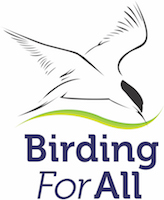GOB 86 – Bogies & Bugs
(This article first appeared in the January 2017 edition of ‘Birdwatching’ magazine)
Do you have a bogie bird? One that, despite not being rare you keep failing to connect with, especially after passing someone saying its ‘showing well’!
How about what US bird writer Al Batt calls an ‘onion’ bird? That’s a bird you so badly want to see it makes you cry tears of joy and pent-up emotion. Mine was Wallcreeper, a bird I first saw on a cigarette card sixty years ago; immaculate slate grey plumage made glorious by vermillion wings. When I finally connected with this glory on a boulder as we crossed a northern Indian riverbed in a jeep, tears rolled down my face. This ‘stonking’ bird gave me a stonking headache for the rest of the day, as well as a wide grin!
The twitching community has loads of terms describing esoteric bird categories, their own cannon of bird names, mostly compressed into monosyllabic bursts like ‘spawk’ for Sparrowhawk or shorthand ones like ‘P G Tips’ for Pallas’s Grasshopper Warbler. Their generic terms include ‘plastic’ for any feral birds not on the official British list like Emperor Geese or escapees from collections like Hooded Merganser that might confuse us hoi polloi into thinking they were blown across the Atlantic by an October storm.
The extreme end of that ‘sport’ also have a term I hate ‘rubbish birds’ referring to the everyday birds one might expect to see on the worst of birding days in the city centre like Rock Doves and Starlings. I could never dismiss a bird as ‘rubbish’, even the common place has its charms… have you ever really looked at a Starling’s plumage in the sunlight? Moreover, one of the great sites in the avian world is the swirling ariel artistry of hundreds of thousands of Starlings turning as one as they descend into a roost.
I concede that there are ‘weed’ birds, a term I’ve just invented to describe birds that are great to see where they belong but that have no place where they have been introduced. In Australia and New Zealand Common Minas are everywhere out competing with the locals, excellent to see in northern India, not so great in northern Queensland. Invasive introductions often replace the natives whether its House Sparrows in the US or Grey Squirrels in the UK. A Canadian friend of has a name for the European Starlings that have spread across his continent ‘tree rats’.
Of course some of these ‘weed birds’ are the twitcher’s dream one day and their ‘rubbish birds’ a few generations later. In the 1950s seeing a Collared Dove over here would have been amazing now they number tens of millions. In the early 1990s I remember the excitement of seeing my first Little Egret, now every ditch and dyke has shed loads.
I have one more term to introduce, that I coined only a few hours ago… ‘bug birds’. These are the birds which you glimpse as a major rarity only to see for what it is a split second later. Certain birds seem to have this ability to morph from pulse quickening rarity to the commonplace with incredible regularity. Do you know of any? I’ll start you off with a few. Pigeons seem to cloak themselves in raptor jizz; I have often rushed binoculars to eyes prompted by a peregrine stoop or flutter that turned out to be a pigeon taking the mickey. I’ve spent hours staking out a bush with a glimpsed mega that turns out to be a Chiffchaff dressed in odd light. My third is the humble Chaffinch that can set your heart racing with a random call or its wet plumage
This is an international phenomenon. I once birded in Florida where every really interesting bird seemed to turn into a Ruby Crowned Kinglet or what my US companion called a ‘Blue-grey Time-waster’; the Blue-gray Gnatcatcher… and they really bugged him!
Hear the Podcast





